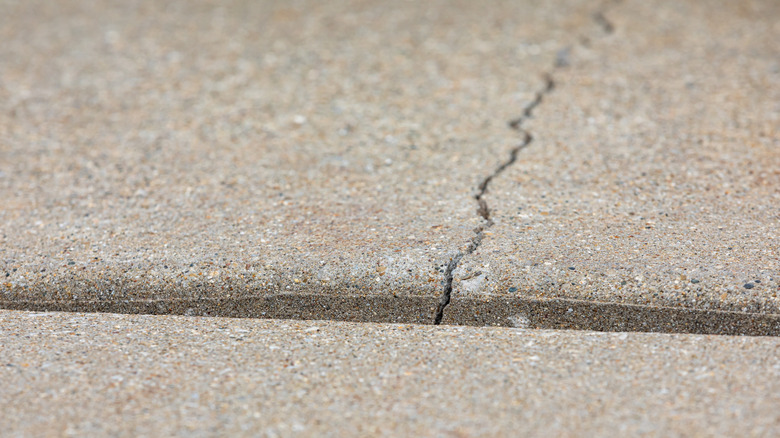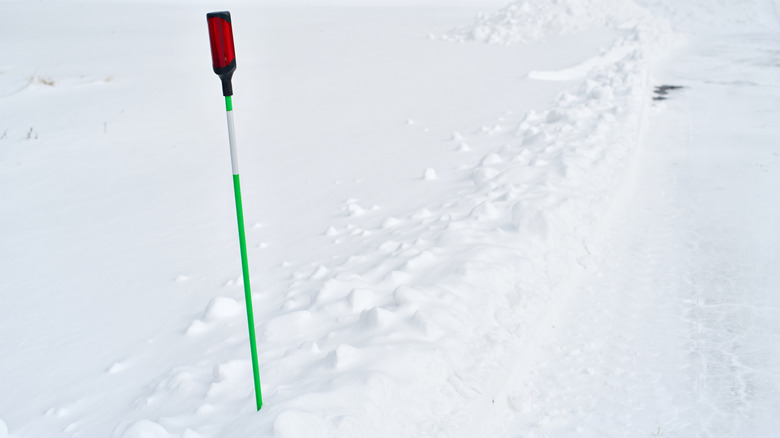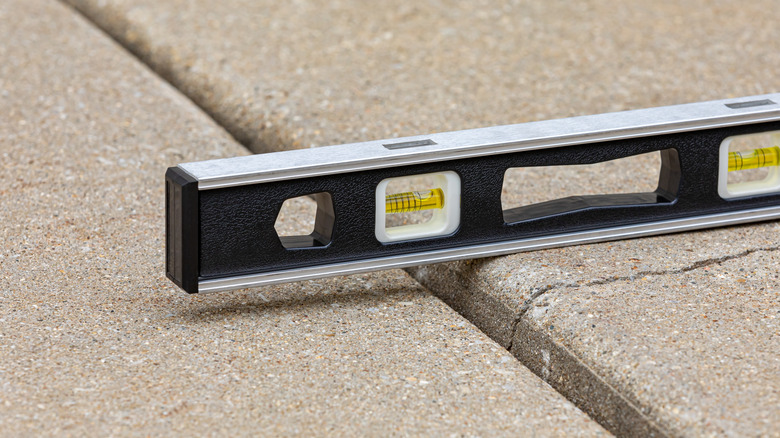7 Must-Do Tasks To Prepare Your Concrete Driveway For Winter
We may receive a commission on purchases made from links.
Before the winter rolls in, it's important that you prep your home for cold weather. While your property's gutters, chimney, and other areas often need attention before the season, your concrete driveway is definitely worth adding to your list of things to do. With winter comes moisture, freezing temperatures, snow, and other conditions that can take their toll on your driveway's surface. The freeze-thaw cycle, in particular, puts concrete at risk for cracks, spalling, and gradual weakening. Neglecting your driveway may lead to costly repairs come spring, as small problems turn into big ones.
Concrete is often chosen for driveways due to its durability, longevity, and low maintenance requirements. It's also environmentally-friendly and can help with heat as it reflects sunlight during the warmer months. Despite its benefits, a concrete driveway still requires occasional upkeep to stay in good shape year-round. Being proactive with maintenance now extends your driveway's lifespan, protects it from winter damage, and maintains curb appeal. As you get ready to shift from fall to winter, double-check to see if your concrete driveway needs any of these essential tasks. It may take a little time now, but you'll soon see the investment is worth it.
Seal (or re-seal) your concrete driveway
If you wonder whether you need to seal or reseal your driveway, the answer is yes, especially before winter. The season may bring rain and snow droplets, which make their way into the concrete cracks. When that moisture freeze, it causes expansion in the concrete, often forming new cracks or even splitting in the process. Applying a sealant guards against moisture and creates a protective barrier against damage from salt and de-icers. Sealing your driveway also improves its appearance by protecting it from stains and UV damage over time.
Repair any damaged areas in the driveway
Small cracks and imperfections in a driveway can escalate after winter's freeze-thaw cycle. When spring arrives, those small cracks can expand as trapped water freezes and thaws, widening the damage. If you repair any cracks in your concrete driveway now, you will save yourself the need for costlier fixes later. Repairs also make the surface safer and easier to seal, since sealants adhere best at temperatures above 50 degrees Fahrenheit.
Clean all debris and dirt on the surface
Cleaning is an essential driveway task you need to get done before winter, because any leaves, or dirt on your driveway traps moisture on the surface. Trapped moisture increases the chance of cracks when it freezes. Removing it will also make it easier to spot any cracks or areas needing repair. Sealant requires cleaning as well, so it's a good way to start the process if you need resealing. Ignoring the cleanliness of your driveway will also make it harder to clean it after it snows, especially if the wet debris freezes.
Stock up on ice melt
When snow or ice arrives, you'll want to clear it from your driveway quickly. Stocking up on de-icing products now, before winter sets in, lets you get it at a more affordable price than when there's heavy demand. Plus, this will ensure you have it once that first snow hits. There are a lot of de-icer options on the market, but experts advise calcium chloride for the fastest plant-safe melt. Avoid using de-icer on newly installed concrete driveways, which have lower freeze-thaw resistance during their first winter.
Check and clear your driveway drains of debris
When your driveway features a drainage system, leaves, sticks, and other debris can easily clog it, obstructing water flow. As the winter brings more moisture, water that can't easily drain can overflow onto the driveway, quickly freezing into ice and increasing the risk of surface damage. Before the first freeze, clear any debris from drains before the first freeze to keep water flowing freely. You can use a pressure washer to quickly flush out the hard-to-reach items or remove buildup stuck to the walls. This crucial step helps ensure the water flows steadily throughout the season.
Mark your driveway for easy snow removal
If you've ever tried to clear your driveway of snow, you know how difficult it can be distinguishing where the driveway begins and the yard ends. Installing driveway markers is one thing that makes snow removal so much easier. You won't have to worry about scraping a snowblower on the concrete edge, or damaging your lawn, especially if you hire a snowplow. Driveway markers are affordable and easy to place before the ground freezes. Reflective markers like Sunnyglade Driveway Markers make it easier to see and navigate your driveway in snowy or dark conditions.
Determine if your driveway needs leveling
Concrete driveways can grow uneven over time from soil erosion, tree roots, and soil compaction. A driveway that isn't level isn't just a nuisance – it's also safety hazard, particularly in slippery snow or icy conditions. Uneven driveways can also create problems with pooling water and drainage issues, especially during freeze-thaw cycles. If you notice sunken slabs, water near your home's foundation, or gaps beneath the concrete, you may need professional leveling. Hire a concrete leveling service early to stabilize the surface and reduce risks of cracking or spalling once winter hits.







